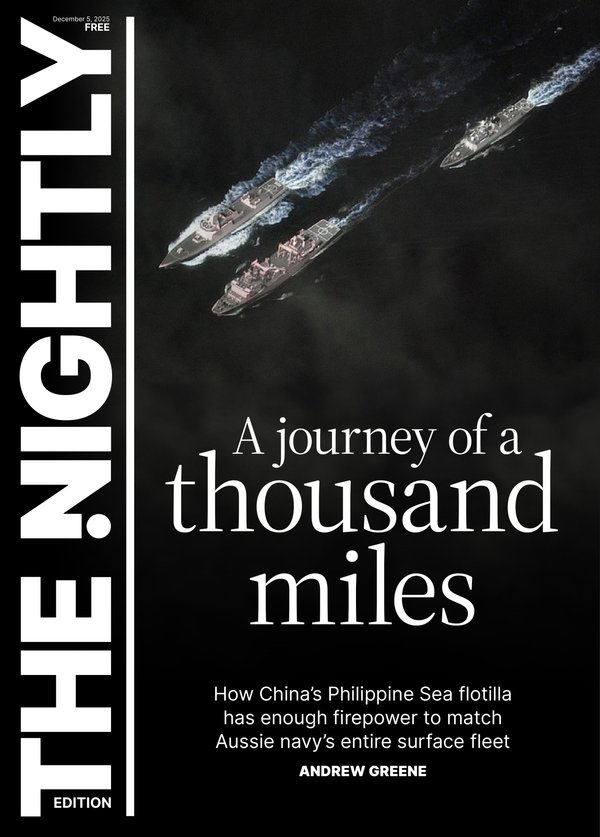Class actions payouts have hit record high and third-party litigation funding companies are cashing in

The cost of extravagant class actions in Australia has hit a record high with third-party litigation funding companies cashing in rather than law firms.
Legal firm King & Wood Mallesons revealed the total bill for class actions in Australia jumped to a record $1.9 billion in 2024-25 — more than the previous two financial years combined.
Between July 2024 and June 2025, 79 new cases were filed, up from 44 during the previous financial year as a result of 19 claims against various health services.
Sign up to The Nightly's newsletters.
Get the first look at the digital newspaper, curated daily stories and breaking headlines delivered to your inbox.
By continuing you agree to our Terms and Privacy Policy.AMP, Colonial First State and ride share giant Uber have been among the seven cases where damages have hit or exceeded $100 million.
A further $1.5b worth of settlements are either awaiting approval or have been approved since July.
The Federal Court and state Supreme Courts are typically awarding a big cut of overall settlement sums to third-party litigation funding companies financing the class action.
In a case of Uber compensating the taxi industry, the litigation funder Harbour Fund received $81.5m, or a 30 per cent cut of the overall $271.8m settlement, compared with $38.7 million for their law firm Maurice Blackburn.
In the $100 million AMP case involving financial advisers, more than a quarter or almost $27 million went to the litigation funder, compared with $12.4 million to the law firm Corrs Chambers Westgarth to cover legal costs.
It was a similar story with the $100 million settlement against Colonial First State over super fees with $23.1 million going to litigation financier Augusta Ventures Limited as law firm Slater and Gordon received $7.5 million.
The $202 million stolen wages case saw the Federal Government compensate Aboriginal and Torres Strait Islander people for being exploited during the 1930s to the 1970s.
This saw close to 20 per cent of the damages, or $31.5 million, awarded to the litigation funder, LLS Fund Services.
Eleanor Atkins, a King & Wood Mallesons partner in Sydney who edited the report, said courts were recognising that litigation funders were needed for class actions to proceed.
“I think the involvement of litigation funders in Australia has led to an increase in the number of class actions,” she told The Nightly.

“It’s true to say that some class actions would not be commenced if there’s not a funder willing to fund it.
“It’s the litigation funder taking on the risk that the claim will fail.
“They make a commercial investment as to the viability of the claim and proceed on that basis.”
Law firms by comparison were receiving relatively little for putting the legal case together.
“There are certainly some examples where the amount received by the plaintiff’s law firm is relatively modest as compared to the amount received by the litigation funder,” she said.
Next year, AMP is facing class actions over life insurance fees while KFC and McDonald’s are being sued over rest breaks.
While most class action cases go to the Federal Court, the Victorian Supreme Court had the second highest number of actions filed by virtue of being the only jurisdiction where an American-style contingency fee is allowed, where law firms get a guaranteed portion of the settlement sum.
“It’s slightly different to a no win, no fee. A no win, no fee is where you are simply seeking to recover your actual costs incurred on that hourly rate basis whereas contingency fees might be something along the lines of, ‘If you receive $100m in settlement, you will give me $30 million of that $100 million’,” Ms Atkins said.
“That is the money that is going to the plaintiff’s law firm.”
Monash University business law professor Vince Morabito likened litigation funders to banks charging interest.
“This is the ‘reward’ that funders receive for the risk they took on in funding the litigation. It’s not unlike the interest charged by financial institutions on their loans,” he told The Nightly.
Professor Morabito said the no win, no fee method was the most common for class actions.
“Solicitors get paid only if a victory is secured for the clients,” he said.
“This is the most used in class actions. If compensation is secured for the client, then on top of their normal hourly fees they can add an uplift fee on their hourly rate, as set out in State legislation governing the legal profession.
“Usually this is up to 25 per cent of the normal hourly fee of the solicitors in question.”
Not every big settlement involved a litigation funder.
A case in NSW involving the working hours of doctors awarded damages of $229.8 million with plaintiff costs adding up to $9.046 million.

